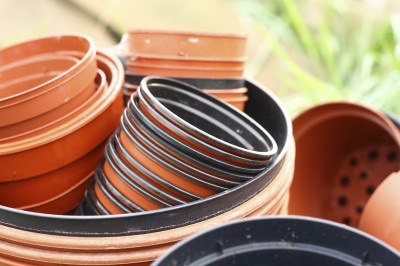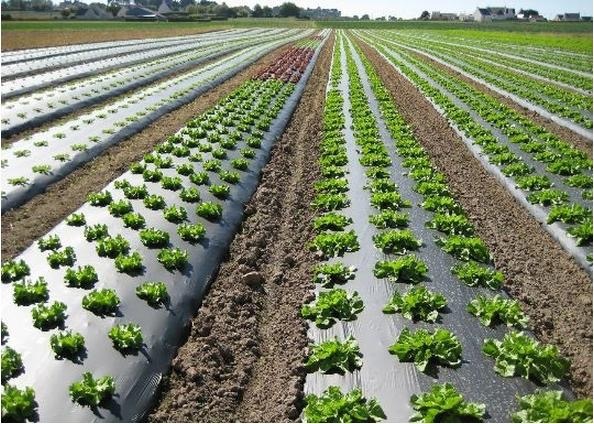 Loading... Please wait...
Loading... Please wait...Blog - Gardening
Plastic and Planting: What You Should Know
Posted by Drew Eisen, Tegan James on 05-01-2018
It’s spring again; another year where I still don’t have a green thumb. As subpar gardener who never met a clay pot I couldn’t crack, I was excited when I learned that there are plenty of plastic planter options already available, ranging from plastic pots to square injection molds.
 .
.
My research also revealed that, on a larger scale, most growers of commercial crops already employ plastic in one form or another. There are “plastic pipes that irrigate crops and greenhouses,” explains gardening writer Amy Grant, “plastics used for covering crops, plastics used in row cropping, plastic mulches and even plastics that are used when growing organic food crops.”

But when cultivating plants or crops that are intended to be eaten, be it on an individual or commercial level, recent concerns over plastics containing Bisphenol A (BPA) have left many wondering if plastic is a safe option.[1]
According to the gardening blog Epic Gardening, of the seven ‘classes’ of plastics, HDPE and LDPE plastics are the preferred choices for [2] growing edible crops. Other garden experts site PETE and PP plastics as viable options as well, with a consensus being that plastics with the “7” are the least suited for the job. [3]

While there is some debate surrounding the impact of BPA on food crops, specifically whether or not BPA can be passed through the cell walls of the roots into the plant itself due to its large molecule size, a safer bet is to simply use BPA-free plastics for gardening containers.
Another tip Grant offers is to keep your plastic containers from over-heating . Potentially harmful chemicals (like BPA) are most significantly released when plastic gets hot, so keeping your plastic cool will help reduce the potential for chemical release. Keep your plastic containers out of intense sunlight and, when possible, opt for light colored containers.
Finally, Grant explains that potting mediums that have a high amount of organic material can be beneficial. Not only does potting medium with lots of organic material stay soft and keep your plants healthy, it will also act like a filtering system that will help to catch and collect the chemicals so less of them make it to the roots. [4]Despite some BPA-related concerns, many in the agriculture field praise the benefits of integrating plastic into the cultivation process. A 2003 study by Ross Penhallegon, horticulturist with the Oregon State University Extension Service, recommended using opaque plastic sheeting to “warm the soil for heat-loving tomatoes, peppers, melons and strawberries."


Explains Penhallegon: “the plastic absorbs heat during the day and keeps the soil warm during the night. This is especially helpful during cool spring weather. [Here] the plastic serves extra duty as it smothers weeds between the rows and reduces evaporation from the soil beneath.” [6]
Whether it’s on a large scale or just in your backyard, plastic seems to offer some legitimate, and exciting benefits to growers of plants large and small. And who knows, switching to plastic may even turn my thumb a shade greener. At the very least, it will stop my collection of wounded and defunct clay pots from getting any bigger. And for me, that’s a step in the right direction.
Try out this Interactive U.S. Planting Zone Map for 2018 published on Gilmour.com:
SHOP NOW & SAVE

.....
ENTER COUPON CODE: BLOG5 to save 5% off your order over $250 at ParkwayJars.com!
.
...
.__________
Drew Eisen grew up in New England and is a Los Angeles based writer, music fan and full-time dog-lover.
[1]https://www.gardeningknowhow.com/special/containers/growing-plants-in-plastic-pots.htm
[3] https://www.epicgardening.com/which-plastics-are-safe-for-gardening/
[4] [4]https://www.gardeningknowhow.com/special/containers/growing-plants-in-plastic-pots.htm
[6] http://extension.oregonstate.edu/gardening/black-plastic-can-help-your-garden-grow
Recent Posts
- » Buy Custom Plastic Jars Direct from Manufacturer - Parkway Plastics
- » California Packaging Regulations and You! How does Parkway stack up? Parkway Plastics Meets CA Rigid Plastic Packaging Container Laws!
- » Blow Molding Explained - How PET Jars and Containers are Manufactured!
- » How Reusable Packaging Can Help Improve Your Brand Image & Costs | Safe Plastic Jars for Reuse | Optimize Your Supply Chain with Reusable Plastic Jars and Packaging |
- » Parkway Now Offers Child Resistant Closures | CRC |

